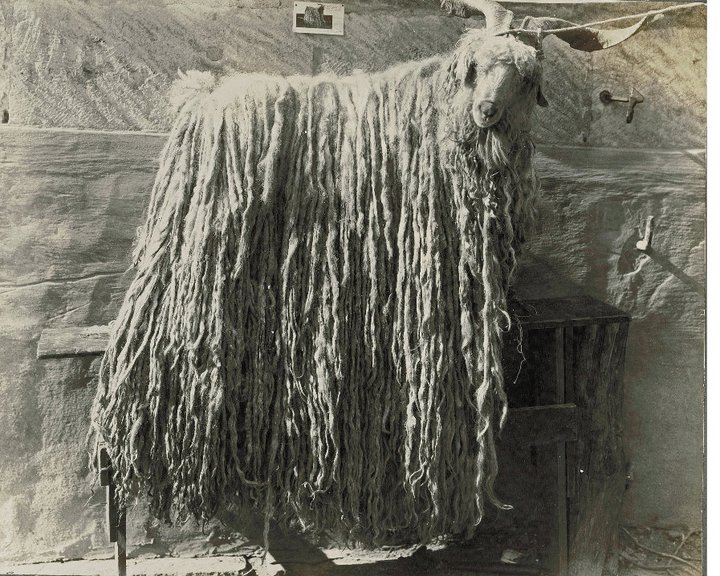Celebrating 100 Years of 4-H in Humboldt County
On display October 2013 to January 2014
That Humboldt county is the first in the state to take advantage of the new [Cooperative Extension], and give her farmers the advantage of scientific advice on farm problems, is a matter of pride to her citizens, and is proving of great value to the agricultural industry of the county” - L. Irvine
In the early 1900s, Humboldt County was extremely remote—no railroads led into the county, so it was generally reached by boat and some road access during summer months. However, Humboldt had a growing dairy industry and a booming lumber industry. Its agricultural production was also flourishing. By 1914, Humboldt County was home to 1,534 farmers, who on average owned 300 acres of farmland and produced up to 12 tons of vegetables or fruit per acre, with the potential to produce more if provided up-to-date, scientific information and advice on crop improvement. A Cooperative Extension farm adviser would be able to provide these services but, as required by UC, Humboldt County first had to allocate funding to help support extension work as well as organize a “farm bureau,” a group of farmers that would guide the farm adviser. As a result, Humboldt was the first county in California to create a farm bureau, which is now part of the California Farm Bureau Federation.
In July 1913, anticipating the passage of the Smith-Lever Act, Humboldt County, with the support of the newly formed farm bureau, appointed Andrew H. Christiansen as the first Cooperative Extension farm adviser in California. Humboldt residents were proud of their initiative, which reflected their eagerness to improve the county’s agricultural industries. With the new farm adviser, Arcata, Ferndale and Fortuna established the first 4-H clubs in California in October 1913, formalizing youth education and civic engagement as a cornerstone of the Cooperative Extension program.
In November, a new exhibit at the Clarke Museum will explore the history of 4-H from 1913 to present day. Continue to check the Clarke Museum website (www.clarkemuseum.org) and Facebook page for 4-H related events, which include a petting zoo, a dog obedience training demonstration, and much more.
Text reproduced with permission from UCCE Humboldt. More info at http://cehumboldt.ucdavis.edu/
That Humboldt county is the first in the state to take advantage of the new [Cooperative Extension], and give her farmers the advantage of scientific advice on farm problems, is a matter of pride to her citizens, and is proving of great value to the agricultural industry of the county” - L. Irvine
In the early 1900s, Humboldt County was extremely remote—no railroads led into the county, so it was generally reached by boat and some road access during summer months. However, Humboldt had a growing dairy industry and a booming lumber industry. Its agricultural production was also flourishing. By 1914, Humboldt County was home to 1,534 farmers, who on average owned 300 acres of farmland and produced up to 12 tons of vegetables or fruit per acre, with the potential to produce more if provided up-to-date, scientific information and advice on crop improvement. A Cooperative Extension farm adviser would be able to provide these services but, as required by UC, Humboldt County first had to allocate funding to help support extension work as well as organize a “farm bureau,” a group of farmers that would guide the farm adviser. As a result, Humboldt was the first county in California to create a farm bureau, which is now part of the California Farm Bureau Federation.
In July 1913, anticipating the passage of the Smith-Lever Act, Humboldt County, with the support of the newly formed farm bureau, appointed Andrew H. Christiansen as the first Cooperative Extension farm adviser in California. Humboldt residents were proud of their initiative, which reflected their eagerness to improve the county’s agricultural industries. With the new farm adviser, Arcata, Ferndale and Fortuna established the first 4-H clubs in California in October 1913, formalizing youth education and civic engagement as a cornerstone of the Cooperative Extension program.
In November, a new exhibit at the Clarke Museum will explore the history of 4-H from 1913 to present day. Continue to check the Clarke Museum website (www.clarkemuseum.org) and Facebook page for 4-H related events, which include a petting zoo, a dog obedience training demonstration, and much more.
Text reproduced with permission from UCCE Humboldt. More info at http://cehumboldt.ucdavis.edu/

